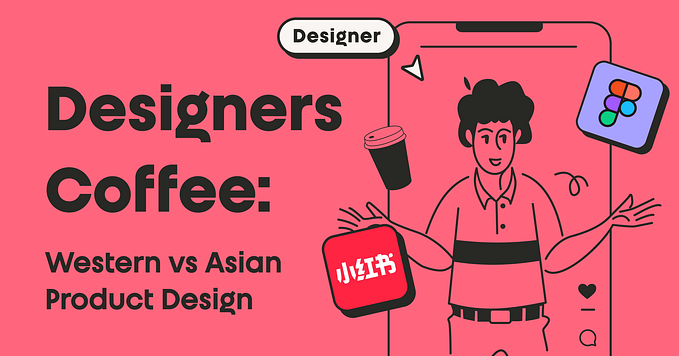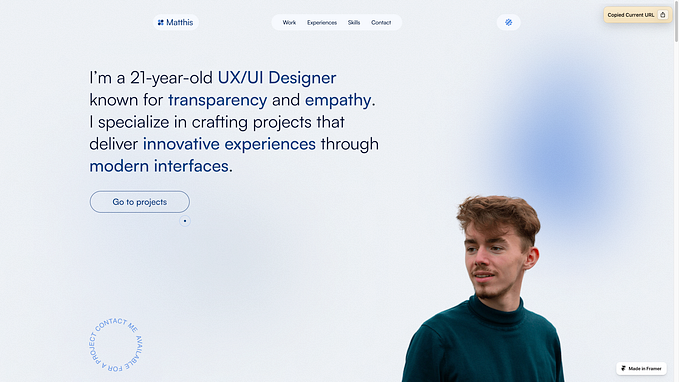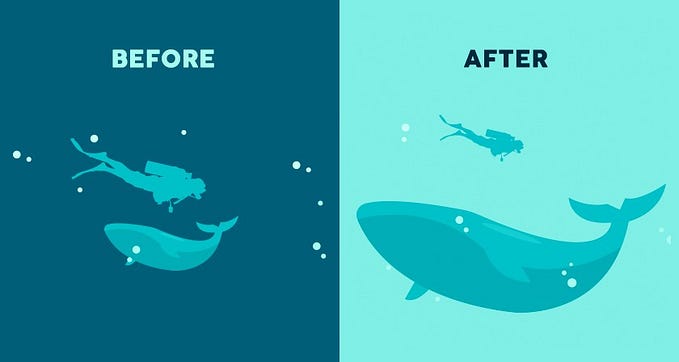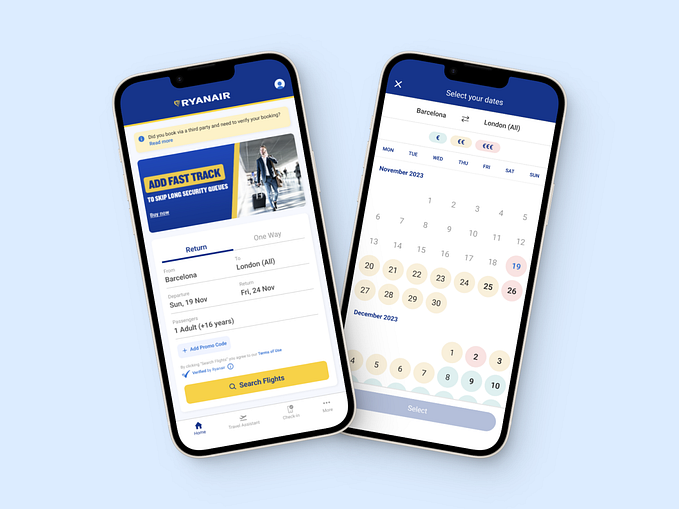The UX of Overcooked: From umami to unexpected design principles
Finding behavioural truth, engagement, and optimal user experiences in unexpected places.

Restart.
Dash, dash, dash. My teammates were staring at me, mildly annoyed as I zipped past them, bumping them on the shoulder. I couldn’t help it; I had tunnel vision; the steamer was going mental, and there were dumplings to be saved. As I rushed over to rescue the hot mess, I heard a voice: “Amy, toss me some flour.” Check! I found the flour, but out of poor reflexes, tossed it into the abyss. Ugh. I was moving fast and making amateur errors. Very quickly, I retraced my steps to undo the mistake. Yes! Got it. I tossed the flour, watched it kiss the sky, then swiftly land into the mixer. Had it been the correct mixer, the toss would have been a colossal success. But no, there were three mixers furiously running at once, and my flour landed in the wrong bowl. Kaput. I slumped down and could only muster the words “sorry…”. My 3-second error ruined a 30-second chopping, mixing, steaming construct, resulting in one too many flours in the bowl. I looked over and got a piercing eye-roll as my teammate threw the bad bowl into the bin. The sound of a falling whistle, followed by a ‘thud,’ expressing the catastrophic play of a ruined dish, was painful to my ear.
“Amy, I think you should just stick to washing the dishes.” Gah. Demoted.

I looked up at the menu board, and my optimism faded; flashing red indicated a negative outlook. Carrots, shrimp, and steaks were everywhere in spectacular disarray, but the small fire in the corner of the room was the crème of the crop — pure chaos. I reluctantly started my new role as a dishwasher, monotonous but therapeutic.
As I was scrubbing away, absorbing the madness of the blunders unravel in front of me, I realized that Overcooked wasn’t just a cooking game; it was a master at breaking all the rules.
Overcooked is one of my all-time favourite games because not only is it pure fun, and well-orchestrated nonsense; it is more complicated than it carries on. Behind the bright, hypnotic colours, eerily memorable tune, and ‘kawaii’ caricatures are gameplay that touches on some of the fundamental principles we learn as experience designers: affordances, signifiers, interactions, feedback, and semantic constraints, to name a few. In my design practice, I often ponder what guiding principles constitute an “optimal experience”; this curiosity usually leaves me seeking other places of inspiration to understand user engagement better and find connections that lead me to behavioural truth. Overcooked happens to be one of them.
As I often find myself playing into the wee hours of the morning, I wonder: How does the act of breaking all the rules enhance the experience?
UX vs. Game Design
Before I delve into that question, it’s important to note that game design goals are different from UX goals. UX removes and hides problems, while Game Design presents dilemmas for the user to master. Interestingly, there is cross-pollination; games often take the principles that define great UX and then do the exact opposite. The two fields talk to each other, debate and sometimes merge.
Pablo Picasso once said:
“Learn the rules like a pro, so you can break them like an artist.”
Overcooked demonstrates this artistry. Deeply rooted in the game, there are some powerful user flows in play, but the game designer often finds ways to break the flow as a means to drive user engagement. Ergo, there is power in ‘the path of most resistance.’
To elaborate, here are three principles to noodle on, principles I discovered in my search for understanding different types of engagement and optimal user experiences. Like most approaches to design, take with a grain of salt and apply if appropriate.
Principle 01:
Embrace ‘The Path of Most Resistance’

I have been told; if we can understand our user’s inherent needs, we can ultimately create the perfect path for them to achieve their goals with minimal effort. Hence, reduce the number of steps it takes for the user to reach their final destination.
However, as we zig, Overcooked zags, users are placed in ridiculous, un-optimized kitchen settings, one that amplifies all friction points. The friction in the game is deliciously good. It forces users to take broken, risky, high in the sky pathways or rush onto a street of oncoming traffic while dealing with anti-affordances like wind, thunder, and conveyor belts. Kitchens vary; sometimes, they are an Ikea-maze of sorts or divided into unusual quadrants forcing you to work with your teammates and forego your one-person show. You learn that no man is an island. Other times you encounter shuffling ghost-like tables playing street magic, causing you to chase after your ingredients and run around the kitchen like a chicken with no head.

Usually, having lots of friction can be downright frustrating. However, the complexity and resistance in these paths work in favour of the game for several reasons. For one, the game continuously counteracts anti-affordances with more simple/manageable actions to create balance in the user experience. Easy to remember, necessary steps like chop, mix, and steam allows me to focus on other obstacles.
This balancing act of push and pull, hard and effortless, fast and slow, make it easy for me to play and want to stay in the game, but it is also difficult enough to keep me challenged.
The ridiculous circumstances, the cacophony of feedback, and the positive reinforcement build memorable stories and multi-sensory experiences, capturing my continuous engagement despite the friction. Let’s not forget the value in glitchy inconveniences and interactive mishaps; if anything, they make the journey much more hilarious. That in itself is a potent tool, and when you have all these elements in play at once, what appears to be a dreadful flow at first, suddenly becomes an engaging path to conquer.
In the case of Overcooked, ‘The Path of Most Resistance’ transforms a frustrating flow into an engaging experience because there is a balance in challenges, ease, and good old-fashioned humour. Ultimately, good UX umami.
Principle 02:
Engagement also entails moments of least resistance: Let the user find their desire path

One cool ah-ha moment in Overcooked was when I had discovered the red herring in a taco/burrito making level. There were precisely two boiling pots and two frying pans arranged in different parts of the room. The kitchen space and equipment are awkwardly composed, and so teammates and I would struggle to coordinate and complete tasks. As we played, we realized that travelling from one set of pans to another pot situated further away ate up precious time, causing mass confusion, duplicate orders, mixed blunders, kitchen fires, and lots of airborne food. However, the moment we realized we didn’t have to follow the rules and could re-engineer our kitchen, migrate saucepans, and boiling pots in closer proximity to the chopping boards, our frustrations evolved into motivations.
“Players like to know that they’ve discovered things that even the designers didn’t know were in the game.” (Will Wright)
Wright¹, a legendary game designer, has always advocated discovery paths and encourages creativity during gameplay. His interests come from the Maria Montessori² technique, which allows kids to discover, fail and find life principles through the natural cycle of playtime rather than undergo regimented teaching practices.
As we played in a similar and natural discovery style, we learned to build our first desire path, bypassing a predetermined set-up. Soon enough, we were well on our way to 4-star success, creating our own stories.
Principle 03:
Heighten interactive experiences: Onboard, discover, and build on the user’s knowledge base


Some levels start with a rudimentary hand-drawn chalkboard indicating what it takes to complete a dish. You chop some tomatoes, chop a salad, put it on a plate, and voila. You do this as many times as possible, chop and repeat, chop and repeat. This onboarding system is vital as it primes the user for more complicated dishes and environments to come. But this, of course, gets monotonous and boring, which is why we get introduced to new skills, signifiers and kitchen elements as we progress. Every chalkboard becomes a new map of exciting journeys to come. In parallel, as we master these rudimentary systems, we discover techniques along the way. The art of ‘tossing,’ ‘dashing,’ and ‘optimal transfers’ are strong proficiencies to learn as I chop my way through carnivalesque kitchens.

Eventually, new-found dexterity and onboarding techniques accumulate into our knowledge base, and players become smarter with conquering new environments. By doing this, users mature, the story grows, levels expand in complexity without exhausting the user, and gameplay continues to delight. You learn what it takes to complete a new dish, you master the art of tossing, and suddenly cooking on two different river rafts doesn’t seem so far-fetched.
“Ive always been fascinated with the idea that complexity can come out of such simplicity.” (Will Wright)
In Overcooked, a simple act of onboarding/priming a user can set the stage for more beautiful complexity ahead when achieving goals and encountering great interactive experiences.

On fire? No problem!


“Most enjoyable activities are not natural; they demand an effort that initially one is reluctant to make. But once the interaction starts to provide feedback to the person’s skills, it usually begins to be intrinsically rewarding.” (Mihaly Csikszentmihalyi³, psychologist)
When you surpass the initial frustrations of making spaghetti in a hot air balloon and start to appreciate the layered orchestration in these ridiculous kitchen predicaments, you begin to discover the hilarity of missing a toss, the glee in bright sounds and hypnotizing colours of stripey carnival fun. The sounds of tossing the flour, chopping the carrots, sizzling the beef begins to guide you, and you start to weave in and out of the kitchen maze like a gazelle.
What started as just a co-op game is something much neater for me; it teaches me how to build engagement by balancing feelings that push and pull a user. It’s a window to how people collaborate and work together and how humour can play a compelling role in creating lasting, memorable experiences. These are all intriguing takeaways that could help us better understand behavioural truth, allowing us to design more meaningful experiences. It is also evident that you can have a lot of fun when you cross-pollinate paradigms like UX and game theory/mechanics, generating more extraordinary interactions in whatever scenario you are designing.
Most importantly, whether we are intentionally breaking the rules, finding desire paths, bypassing obstacles, finding patterns, learning skills, I found the most significant moments are when we are quite simply, solving problems together. Yes, it is straightforward but worth noting. The power in problem-solving is that it emulates real-life and what we do naturally on a day-to-day basis.
Underneath all its shiny whimsical intricacies, Overcooked is an affirmation of who we are as humans; natural-born problem solvers continuously on the hunt to find meaning. And as we surpass the game’s space-time continuum, we enter a powerful state of ‘flow’; our imagination broadens as we experience the most magnificent odyssey of all.

Let’s not forget; Your users are not always serious

Not all design needs to be austere, functional, and civic; it can be multi-sensory, silly, a place for getting lost, and just having plain old fun. But it all starts with learning the rules, breaking the rules, having fun with it, then creatively vandalizing the rules all over again.
It’s not over until it’s Overcooked.
Overcooked anyone? ㋡
[1]: William Ralph Wright
[2]: Maria Montessori
[4] Ghost Town Games, all game images and clips captured live on the XBOX.









